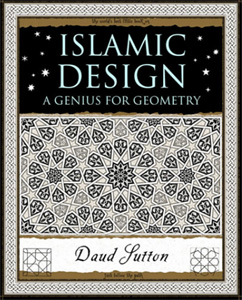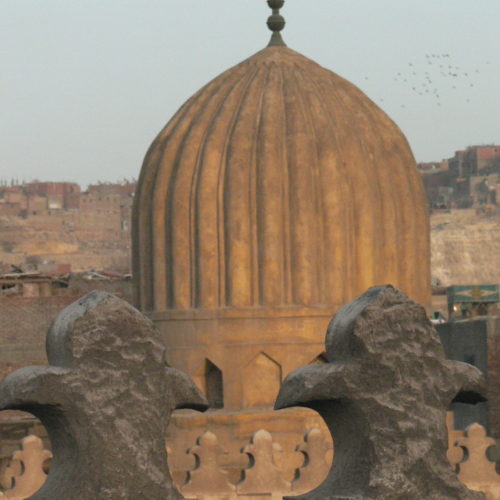
Geometry – The Language of Symmetry in Islamic Art
by Richard Henry
Throughout the ages mystics & theologians have used geometry as a contemplative focus, as it enables the viewer a vision of the underyling order of both the cosmos and the natural world . The cyclical movement of heavenly bodies, which Plato described as the ‘music of the spheres’, finds its Earthly reflection in the natural symmetries found throughout nature and most strikingly within the world of flowers, the proportions of which are governed by simple geometric laws. The origin of the word ‘cosmos’ is adornment (from which we derive the modern word ‘cosmetics’) and the adornment of sacred buildings with both floral and geometric patterns makes the viewer sensitive to the subtle harmonies uniting the natural world around us with the cosmos.
In Islamic art the geometric figure of the circle represents the primordial symbol of unity and the ultimate source of all diversity in creation. The natural division of the circle into regular divisions is the ritual starting point for many traditional Islamic patterns, as demonstrated in the drawings below.

The pattern above (15 th century) from Yazd in Iran is derived from six regular divisions of the circle. From this a regular grid of triangles is established, on top of which the design is elaborated. Note how the complex tracery of pattern interweaves with the basic design which appears in white outline in the photograph above.

A family of geometric tiles (above), derived from the octagram (khatam – 8 pointed star) form a ‘jigsaw’ puzzle, which through different combinations can generate a myriad of stunning designs. These are typical of the ceramic cut tile pieces used in mosaics thoughout Morocco, where they are known as ‘zillij’ and Andalucia, where they are known as ‘alicatado’, from the early medieval period onwards. These shapes are still cut by hand in modern day Morocco.
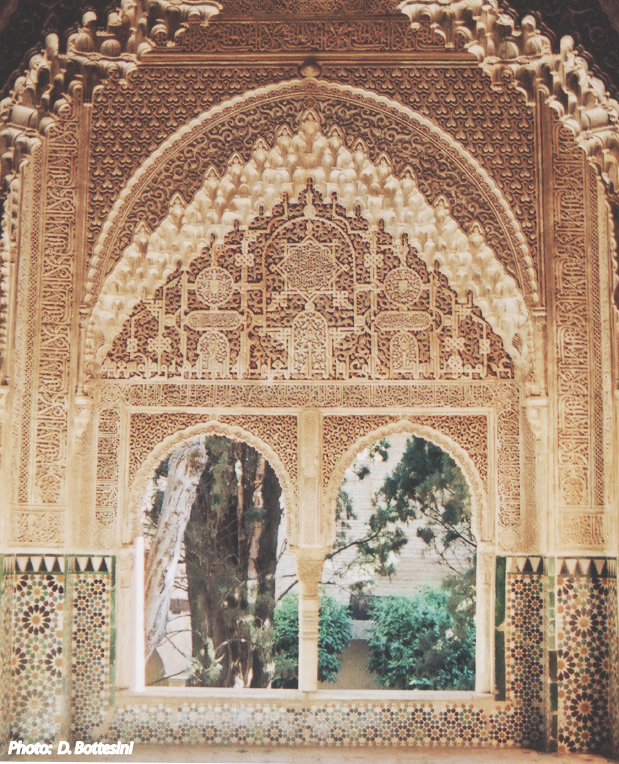
In the Alhambra (14th C), Spain (above), geometric pattern is perfectly integrated with biomorphic design (arabesque) and calligraphy. These are the three distinct, but complementary, disciplines that comprise Islamic art. They form a three-fold hierarchy in which geometry is seen as foundational. This is often signified by its use on the floors or lower parts of walls, as shown in the image above.
The decorative elements deployed use a range of symmetries that have now been classified as belonging to distinct mathematical groups, but the subtlety and beauty of the designs is unparallelled in modern mathematical thinking.
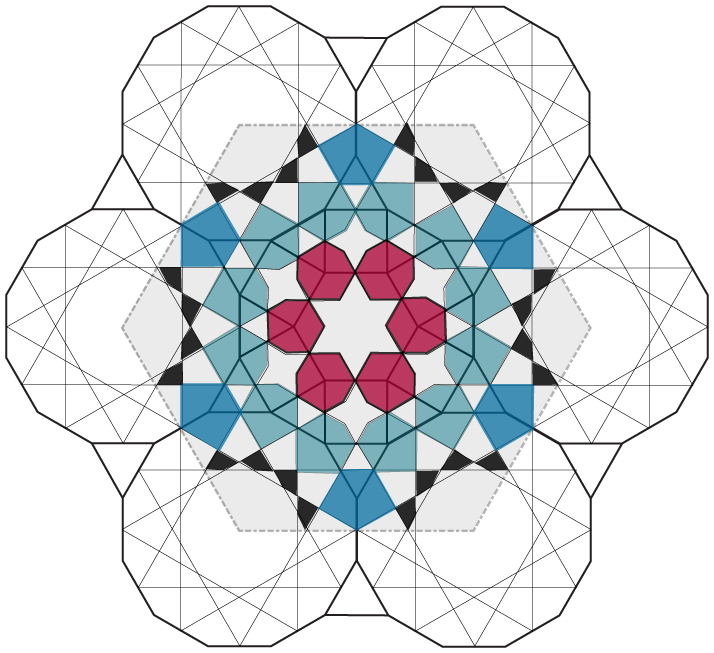
Islamic designers used the full range of Archimedean tilings (comprised of simple polygons) first discovered by the Greeks, but added to and expanded upon these with extraordinary visual and spatial ingenuity. The pattern above (after Paul Marchant) is based on elements of medieval designs typically found in Cairo. Notice the pattern of underlying polygons: hexagons, triangles, squares, dodecagons. The underling tiling pattern is usually hidden beneath the final design, as if behind a veil, but the viewer is always given an intimation of the hidden order and this is part of what gives the designs their meditative power.
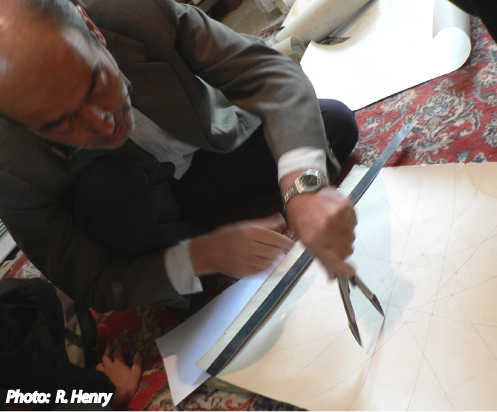
With a compass and ruler an Iranian master craftsman demonstrates a method for setting out a pattern which employs 10-fold radial symmetry. Note the construction of the decagram (10-pointed star). This is the key generative motif for Persian ‘girih’ patterns.

The four examples above show how to derive a range of classic motifs from the decagram (there are several more). These form the basis of 12th century Iranian ‘girih’ patterns, which have been linked to Roger Penrose’s famous non-periodic tilings, i.e. patterns that can extend to infinity without regular repetition.
The pattern below is a cut tile mosaic pattern from the inside tomb of Persian poet Hafez in Shiraz, Iran. Note how the family of geometric ‘girih’ motifs derived from the decagram is variously deployed with great ingenuity across a curved surface in the design below.
Shiraz – Aramgah-e Hafez. Tomb of Hafez, tombstone placed by Karim Khan 1773. Octagonal pavillion added 1935 (photo: R. Henry).



